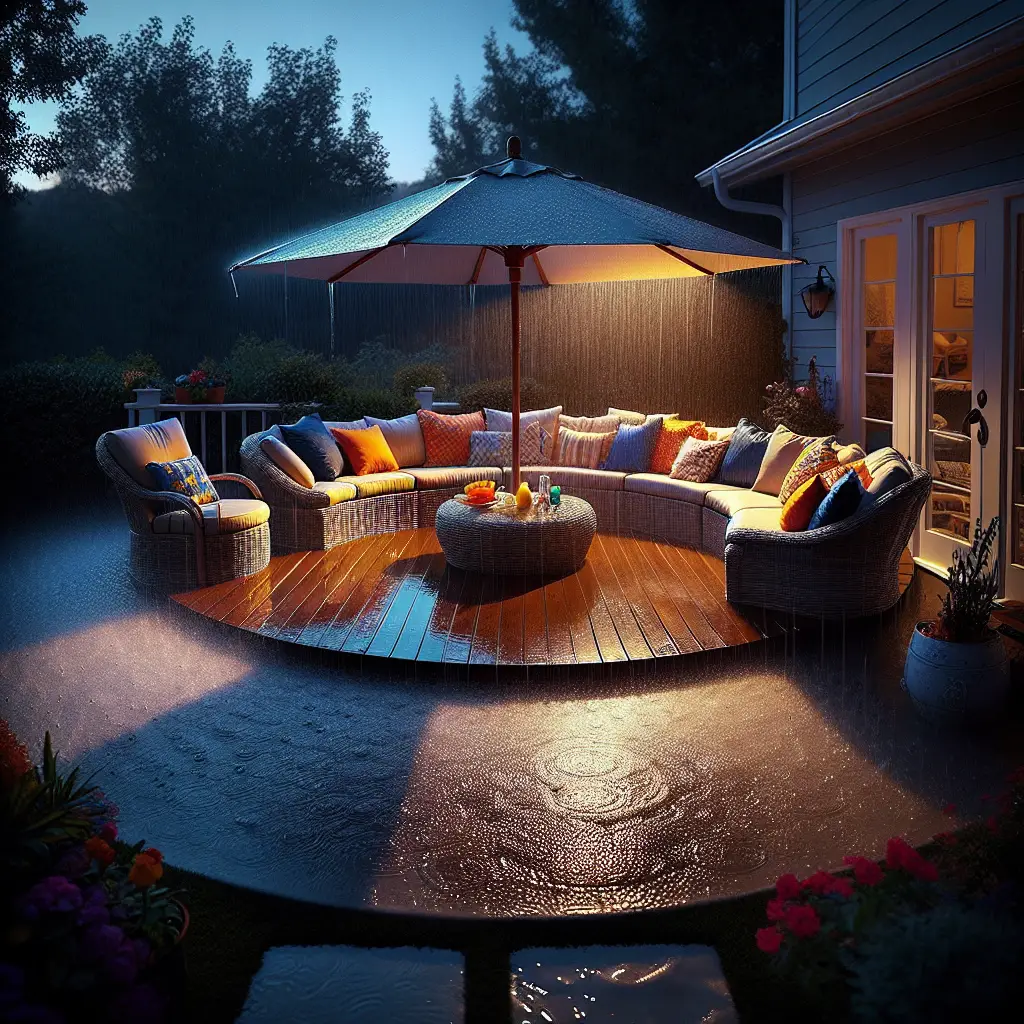Can Outdoor Furniture Get Wet? Yes, Sort of…
Outdoor furniture is an essential element in crafting a comfortable and inviting backyard oasis. But as we pick out the perfect sofas, chairs, and tables for our outdoor spaces, one question often lingers in our minds: can outdoor furniture really handle getting wet? Today, we delve into this concern, offering insights and solutions to keep your garden furnishings looking splendid, rain or shine.
Understanding the Elements
First things first, it’s important to recognize that outdoor furniture is designed considering the whims of weather. Whether it’s a surprise summer storm or a relentless spring drizzle, outdoor pieces are usually built with materials that resist the elements to some extent. However, this doesn’t mean they are completely invincible to water. Prolonged exposure to moisture can lead to problems like mold, mildew, and rust (on metal components), which can shorten the lifespan of your furniture.
Types of Outdoor Furniture Materials
Outdoor furniture comes in a range of materials, each with its own set of strengths and weaknesses regarding water resistance. Let’s break it down:
– Teak:
A popular choice for outdoor furnishings, teak is known for its durability and natural resistance to water and rot. The high oil content in teak wood acts as a barrier against moisture infiltration. However, over time, even teak can succumb to moisture if not properly maintained.
– Wicker (Synthetic):
Synthetic wicker, often made from resin or vinyl, is another water-resistant option Architectural Digest. This type of wicker doesn’t absorb water, making it a practical choice for humid or rainy climates.
– Metal:
Metals like aluminum, stainless steel, and wrought iron are prevalent in outdoor furniture design. Aluminum is naturally rust-resistant, while stainless steel needs a protective powder coating to keep rust at bay. As for wrought iron, it’s all about the finish—which should be kept intact to prevent rust.
– Fabric:
Yes, even outdoor cushions can handle moisture. Thanks to brands like Sunbrella, outdoor fabrics are designed to repel water, resist mildew, and dry quickly. It’s still important to bring cushions inside during heavy storms to keep them looking their best.
Maintenance and Protection
No matter the material, some TLC is inevitably required for outdoor furniture. Protecting your furniture is the key to prolonging its life, regardless of the forecast. Here are some tips:
- Cover Up: Investing in quality furniture covers for times when the pieces aren’t in use, especially during off-season months, is a great way to guard against moisture (Consumer Reports).
- Regular Cleaning: Wipe down surfaces to prevent dirt build-up which can trap moisture. For wooden furniture, occasionally re-sealing it with a recommended product will keep it water-tight.
- Cushion Care: For outdoor cushions, standing them on their sides after a rainfall helps them dry more quickly and keeps water from pooling. Store them indoors when the forecast calls for torrential downpours.
- Proper Storage: During the harsher months, storing furniture in a shed or garage can add years to its life.
Dealing With the Unexpected
Sometimes, the weather doesn’t play fair, and we’re caught off guard. It can be sunny one moment and pouring the next. If your outdoor furniture does get wet, take action as soon as possible—wipe down the surfaces, turn cushions on their edge, and if possible, move items to a sheltered area until they can fully dry out.
The Verdict: Can Outdoor Furniture Get Wet?
Yes, it can, but with a catch. “Sort of” is the operative term here. While most outdoor furniture is built to withstand the elements, including rain, it is not impermeable. Long-term or excessive exposure to water can cause damage and wear. The key to maintaining the beauty and longevity of your outdoor pieces lies in choosing the right materials, performing regular maintenance, and using protective measures against the elements.
By understanding the importance of material choices, adopting proactive care practices, and being prepared to act when the skies open, your outdoor furniture can remain a cherished feature of your backyard for many years to come.
In conclusion, with the right approach, your outdoor furniture can indeed brave the rain, allowing you to relax and revel in your garden space without worry. For those looking to upgrade or invest in new outdoor pieces, be sure to thoroughly research and opt for furnishings made with weather-resistant materials and fabrics. With careful selection and maintenance, your outdoor paradise will thrive, no matter what the forecast holds.


